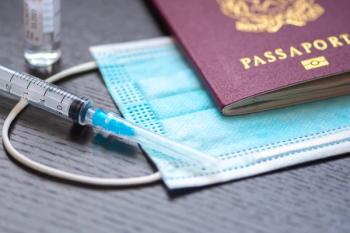
Study: Hybrid Closed-Loop Insulin Therapy Improves Glycemic Control in Type 1 Diabetes
Research shows that closed-loop systems can increase time in range and reduce both hyperglycemia and hypoglycemia in youth and young adults.
New research has found that a hybrid closed-loop insulin therapy improved glycemic control in adolescents and young adults with type 1 diabetes, according to an article published in Diabetes Technology & Therapeutics (DTT).1
Despite improvements in care for type 1 diabetes, the study authors noted that the majority of youth with the disease still fail to meet glycemic control targets. Closed-loop insulin delivery may help improve glycemic control, although outcomes data are scarce in pediatric and young adult populations. Short-term studies in monitored clinical settings and at diabetes camps have found that closed-loop systems can increase time in range (TIR) and reduce both hyperglycemia and hypoglycemia.1
Furthermore, the authors said a retrospective study of a clinically available closed-loop control (CLC) system suggested that successful use was associated with increased TIR and reduced HbA1c in youth, although many participants discontinued use of the hybrid closed-loop system within the first 6 months. According to the study authors, they cited difficulty with calibrations, alarms, expense, and the workload required to ensure correct function as reasons for discontinuation.1
In the study, called the International Diabetes Closed-Loop (iDCL) trial, participants with a mean age of 17 years were randomly assigned to a CLC insulin delivery system or a sensor augmented pump (SAP) with a continuous glucose monitoring system over a 6-month period. Both groups attended follow-up visits at 2, 6, 13, and 26 weeks and were contacted by telephone at 1, 4, 9, 17, and 21 weeks. Data-driven optimization of pump settings could be made at the 2-, 13-, and 26-week visits.1
According to the findings, the TIR for glycemic control increased by 13% for the CLC group compared to a decrease of 1% in the SAP group. The investigators said this resulted in a group difference of plus 3.1 hours per day. This change also reflected a reduction in time spent at greater than 180 mg/dL, and the authors said the use of CLC was especially effective at increasing time in range overnight.1
“Notably, we found that this sample of adolescents and young adults successfully used the CGM more than 90% of the time during the 6-month trial and the closed-loop system was active 89% of the time,” said John Lum, MS, of the Jaeb Center for Health Research, in a press release.2
According to the study authors, reportable adverse events (AEs) included serious AEs, AEs occurring in association with a trial device or procedure, severe hypoglycemia, diabetic ketoacidosis, and hyperglycemia with ketonemia for which a health care provider was contacted.1
“Multiple Automated Insulin Delivery systems using different algorithms have been developed in the past decade for patients with type 1 diabetes. Almost all of the systems have shown significant reductions in nocturnal hypoglycemia,” said Satish Garg, MD, editor-in-chief of Diabetes Technology & Therapeutics, in a press release. “The iDCL multicenter trial done in young adults and adolescents with [type 1 diabetes] reported in this issue of DTT further advances the use of hybrid closed-loop system by increasing the time-in-range, especially during the night.”2
REFERENCES
- Isganaitis E, Raghinaru D, Ambler-Osborn L, et al. Closed-Loop Insulin Therapy Improves Glycemia Control in Adolescents and Young Adults: Outcomes from the International Diabetes Closed-Loop Trial. Diabetes Technology & Therapeutics; January 21, 202 https://www.liebertpub.com/doi/10.1089/dia.2020.0572. Accessed January 29, 202
- Hybrid Closed-Loop Insulin Therapy Improves Glycemic Control [news release]. Mary Ann Liebert Publishers; January 26, 2021. https://home.liebertpub.com/news/hybrid-closed-loop-insulin-therapy-improves-glycemic-control/3810. Accessed January 29, 2021.
Newsletter
Stay informed on drug updates, treatment guidelines, and pharmacy practice trends—subscribe to Pharmacy Times for weekly clinical insights.


















































































































































































































